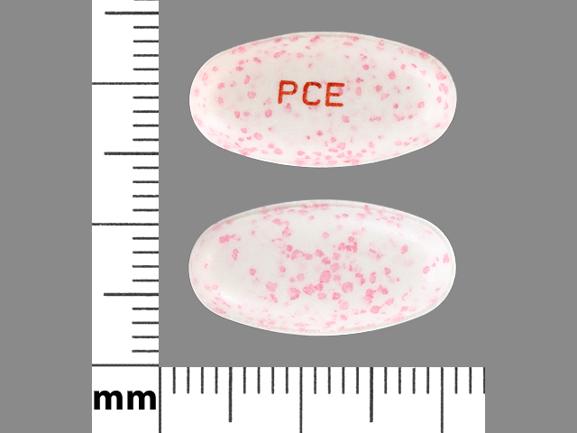PCE Dispertab Interactions
There are 686 drugs known to interact with PCE Dispertab (erythromycin), along with 5 disease interactions, and 2 alcohol/food interactions. Of the total drug interactions, 209 are major, 415 are moderate, and 62 are minor.
- View all 686 medications that may interact with PCE Dispertab
- View PCE Dispertab alcohol/food interactions (2)
- View PCE Dispertab disease interactions (5)
Most frequently checked interactions
View interaction reports for PCE Dispertab (erythromycin) and the medicines listed below.
- Activase (alteplase)
- alfentanil
- Ambien (zolpidem)
- Ambien CR (zolpidem)
- Aquatab DM (dextromethorphan / guaifenesin)
- Aspirin Low Strength (aspirin)
- aspirin / methocarbamol
- Atrovent HFA (ipratropium)
- benzocaine / trimethobenzamide
- benzonatate
- betamethasone topical
- Betapace AF (sotalol)
- Biaxin (clarithromycin)
- Cardizem SR (diltiazem)
- cephalexin
- Ceron-DM (chlorpheniramine / dextromethorphan / phenylephrine)
- clobetasol topical
- codeine / promethazine
- Cuprimine (penicillamine)
- Diamox (acetazolamide)
- Dificid (fidaxomicin)
- Dilaudid (hydromorphone)
- dimenhydrinate
- enalapril / felodipine
- Enbrel (etanercept)
- Flexeril (cyclobenzaprine)
- fluorouracil
- Givlaari (givosiran)
- glyburide
- Guaifenesin DAC (codeine / guaifenesin / pseudoephedrine)
PCE Dispertab alcohol/food interactions
There are 2 alcohol/food interactions with PCE Dispertab (erythromycin).
PCE Dispertab disease interactions
There are 5 disease interactions with PCE Dispertab (erythromycin) which include:
More about PCE Dispertab (erythromycin)
- PCE Dispertab consumer information
- Compare alternatives
- Drug images
- Side effects
- Dosage information
- During pregnancy
- Drug class: macrolides
- Breastfeeding
Related treatment guides
Drug Interaction Classification
| Highly clinically significant. Avoid combinations; the risk of the interaction outweighs the benefit. | |
| Moderately clinically significant. Usually avoid combinations; use it only under special circumstances. | |
| Minimally clinically significant. Minimize risk; assess risk and consider an alternative drug, take steps to circumvent the interaction risk and/or institute a monitoring plan. | |
| No interaction information available. |
See also:
Further information
Always consult your healthcare provider to ensure the information displayed on this page applies to your personal circumstances.


